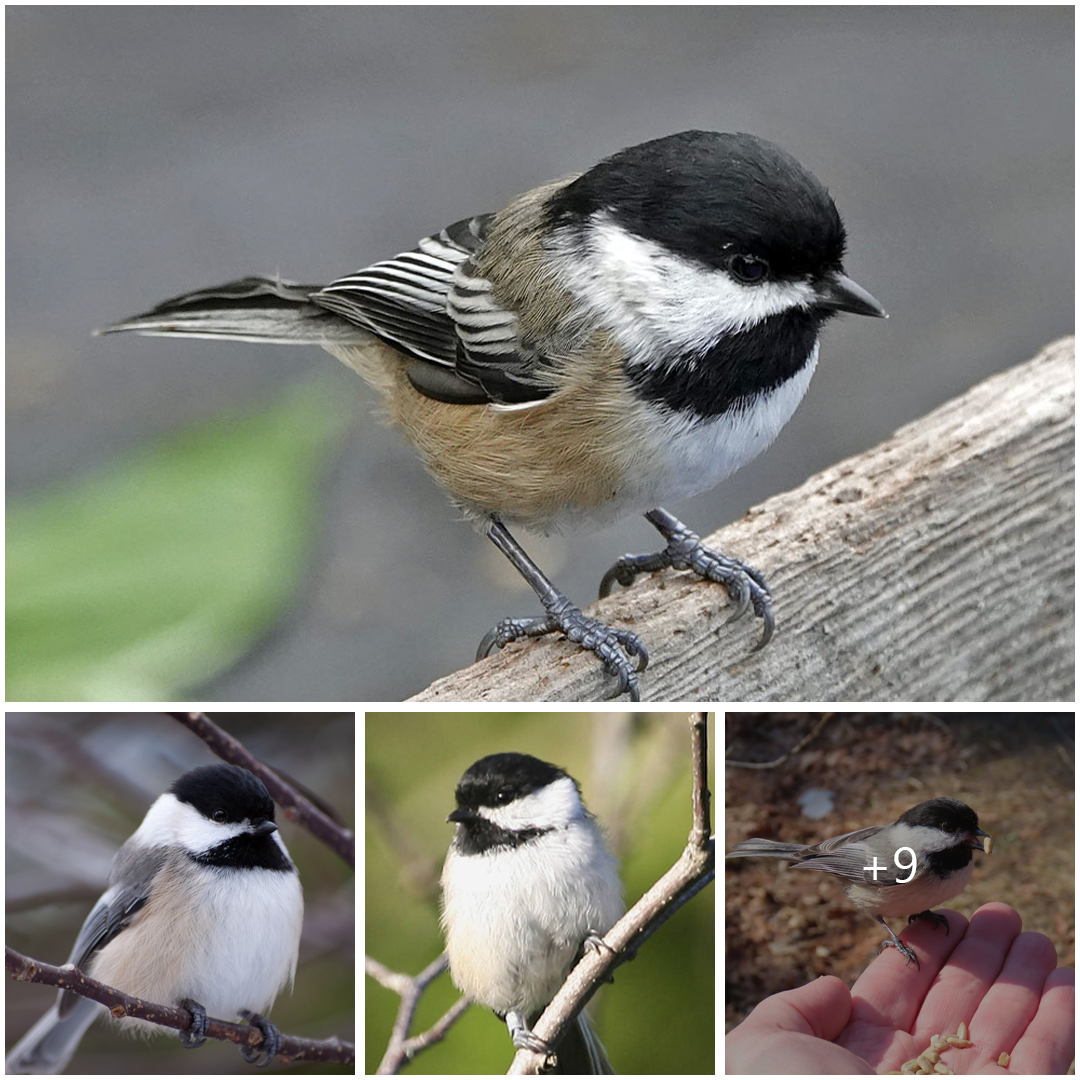
Discovering the Enigmatic Black-Capped Chickadee: Nature’s Tiny Dynamo
The black-capped chickadee (Poecile atricapillus) stands as a dynamic emblem of resilience and adaptability within North America’s diverse avian community. While its appearance may seem unassuming at first glance, this diminutive songbird harbors a wealth of fascinating traits and behaviors that endear it to birdwatchers and nature enthusiasts alike.
Physical Characteristics: Sporting a petite frame and a jaunty disposition, the black-capped chickadee measures just 11 to 14 centimeters in length. Its plumage features a subtle palette of colors, with a black cap and bib contrasting elegantly against a soft gray back and wings. The bird’s white cheeks and throat add a touch of charm to its appearance, while its rounded body and short, stout bill reflect its robust nature.
Habitat and Range: Black-capped chickadees are widespread across the woodlands and forests of North America, from the northern reaches of Canada to the temperate forests of the eastern United States. These adaptable birds thrive in a variety of habitats, including deciduous and coniferous forests, parks, and residential areas. Their range extends from coast to coast, encompassing diverse ecosystems and geographical regions.
Foraging Behavior: Renowned for their spirited foraging antics, black-capped chickadees are relentless hunters of insects, seeds, and berries. With their agile movements and keen eyesight, they scour the foliage and branches of trees in search of sustenance. Their diet includes a diverse array of prey, from caterpillars and beetles to sunflower seeds and berries. Chickadees are also adept at caching food for later consumption, storing seeds and insects in crevices and bark for times of scarcity.
Social Dynamics: Black-capped chickadees are highly social birds that form cohesive flocks, especially during the winter months. These flocks provide protection against predators and enhance the birds’ foraging efficiency. Within these social groups, chickadees communicate through a repertoire of vocalizations, including their signature “chick-a-dee-dee-dee” call, which serves as a form of communication and social bonding.
Breeding and Nesting: During the breeding season, male chickadees engage in spirited courtship displays to attract mates. Once pair bonds are formed, females construct cozy nests in tree cavities or artificial nest boxes, lining them with soft materials such as moss, fur, and feathers. They lay a clutch of 5 to 8 eggs, which are diligently incubated for about two weeks. Both parents share in the responsibilities of feeding and caring for the nestlings until they fledge and venture into the world on their own.
Conservation Status: The black-capped chickadee is a resilient species with a stable population throughout much of its range. While it faces threats from habitat loss and climate change, its adaptable nature and widespread distribution afford it a degree of resilience. Conservation efforts focused on preserving and restoring forest habitats are crucial for safeguarding the chickadee’s future and ensuring its continued presence in North America’s woodlands.
In summary, the black-capped chickadee captivates observers with its dynamic personality, spirited foraging behavior, and unwavering resilience. As a cherished inhabitant of North America’s forests, this endearing songbird serves as a testament to the beauty and diversity of our natural world, inspiring admiration and appreciation among all who encounter it.





